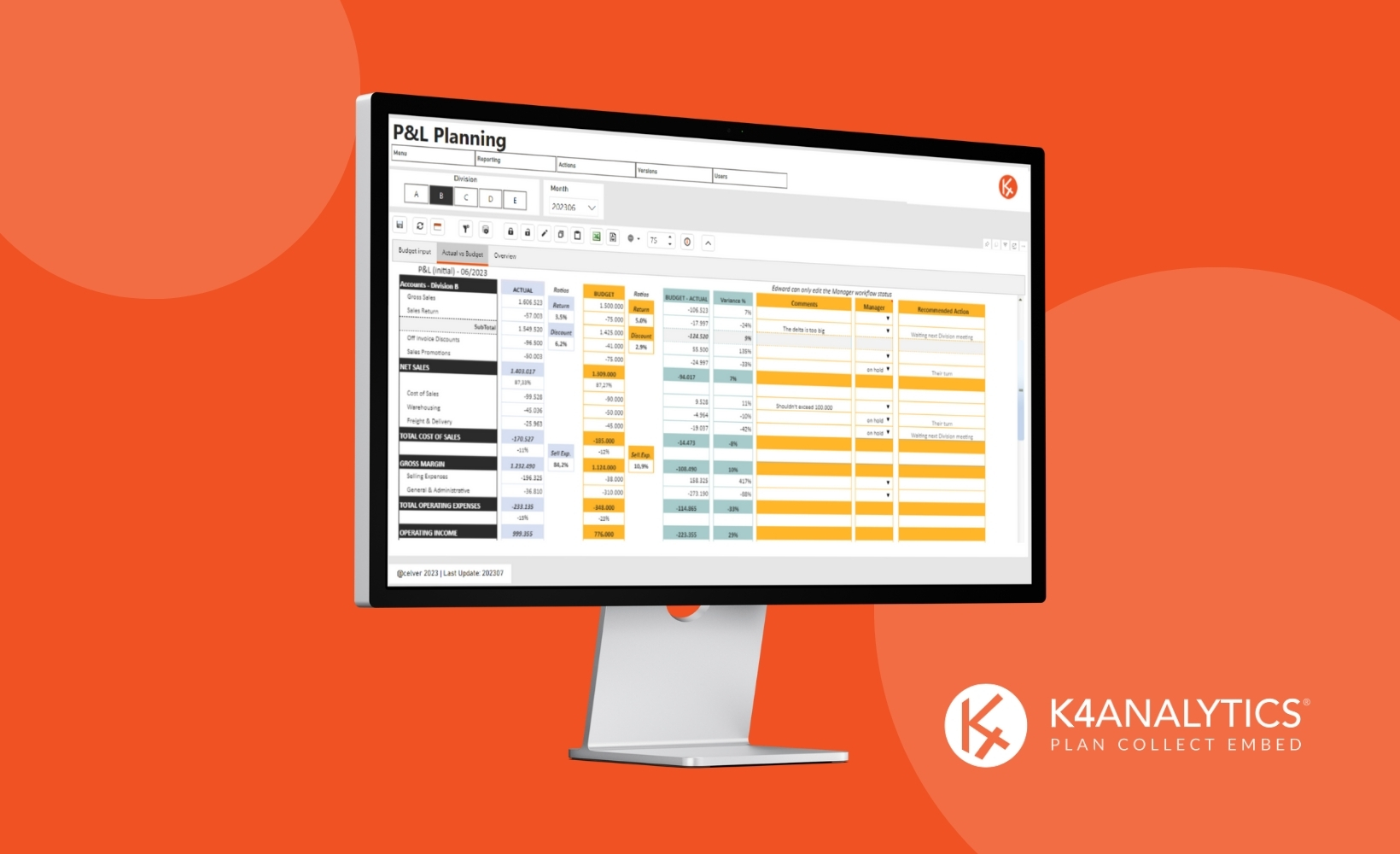Operational management in the retail sector is complex for many reasons: the number of factors to consider, changes in trends or seasons, the great diversity of stock, the variability in demand, etc.
The amount of information that needs to be managed to keep everything under control can be overwhelming, which is a major challenge for retailers.
That’s why in this article we explore 4 challenges in retail operations related to planning and reporting, and how a Business Intelligence, Planning and Artificial Intelligence (AI) solution can help you overcome them easily.
Collecting, centralizing and analyzing all business data
In retail, data is the cornerstone of success. Proper management and analysis of data, including trends, customer behavior, sales, etc., allows you to make more informed decisions and improve business results.
But the amount of data is so overwhelming (seasons, sales, collections, granularity of items, etc.) that it is necessary to have the right tool to manage it and turn it into actionable and useful information for decision making.
In many cases there are barriers that prevent this from happening, for example if the data are not collected properly, are not integrated between different software and tools, or if they form islands of data that are not shared between departments, among other reasons.
The solution is to have an automated reporting system that collects and is the central point of information for the entire organization, that integrates both online and offline channels, that allows differentiation by item and point of sale (geographic area or type of store) and that clearly offers all the key KPIs of the business (conversion rate, average ticket, comparisons between points of sale, etc.).
Achieving agile and collaborative high-level planning
Merchandise Financial Planning (MFP) is the planning that defines guidelines and high-level objectives. Historically, this plan consisted of trying to anticipate demand based on the previous season and ensure a stock to cover it, all within the financial objectives, something that was done on spreadsheets after days or weeks of hard work.
In today’s world, this way of proceeding is obsolete. Processes must be more agile and collaborative to adapt to the changing needs of the environment and facilitate informed decision making, not based on subjective perceptions or intuition.
Planning done without the depth and overall input from all key users can lead to poor anticipation of a season, causing stock to be overstocked (with the associated costs this has) or to break on the most in-demand items (limiting profits).
A Planning MFP solution allows for more agile planning at multiple levels and by multiple concurrent users. This new approach saves teams a lot of time, time that can be spent on generating more value, such as analyzing and defining the best plan to align MFP with sales objectives.
Retail planning solutions allow top-down and bottom-up analysis to ensure that high-level planning is aligned with objectives, reaching as deep as store, model-color or even SKU levels, where traditional spreadsheets do not reach.
Make accurate sales estimates and improve the customer experience
Sales estimation is an important part of both managing inventory and ensuring a great customer experience.
Demand changes are happening faster and faster, so there is a need for data to help forecast beyond the previous year’s sales numbers, something that AI-based predictive models can help with.
In addition, consumers are increasingly demanding more personalized shopping experiences, which requires the ability to analyze their behavior in order to provide recommendations that are relevant to them.
A BI + AI solution can help collect and analyze a multitude of customer data, segment audiences (based on their history, preferences, geographic location, etc.) and offer personalized promotions that increase both customer satisfaction and sales.
Efficient stock management at warehouse and store level
Another major challenge is stock management at both warehouse and store level (allocation & replenishment).
Changes in demand, trends, new product launches and other vicissitudes of the sector make it difficult to anticipate the right stock, both in the store and in the warehouse. Therefore, as we mentioned in the previous section, having a good predictive capability is also key for inventory management, although this is only the starting point.
Planning + AI solutions make it possible to connect demand forecasts with central stock (warehouse) planning in order to estimate their impact. This, together with a central stock planning solution, helps to anticipate OTB (Open To Buy) and to plan mid-season discounts and markdowns, minimizing stock and maximizing margin.
At the store level, linking detailed predictive models by region/store with a replenishment solution allows to anticipate, plan and even simulate shipments to stores (from warehouse or from another point of sale). This combination of planning + AI helps to prevent stock-outs (as any change in trend or consumption pattern can be detected in time), reduce replenishment and shipment times and minimize the costs associated with transporting goods.
We help you to deploy a BI system tailored to your needs
If we are talking about retail, the best option is to have a solution tailored to the business. Partial tools or shared spreadsheets that generate poor quality information do not help to make informed decisions at the operational level.
A complete solution that combines Business Intelligence, Planning and AI allows you to overcome all these difficulties, bringing great value across the supply chain: reducing the effort needed to create useful reports, facilitating a deeper understanding of both store and product performance, and freeing up time for teams to spend on more value-generating analysis.
This enables better operational planning and measurement of all KPIs in a single tool, integrating all end-to-end information.
Retail planning, by its nature, can benefit a lot from data analytics and the application of Artificial Intelligence. If you have any questions or are interested in learning more about how we can help you improve your retail operations, please do not hesitate to contact us.
Related Articles
In a context like the current one where financial instability and market volatility are so present, it is normal that [...]
Board International was founded in the 1990s with the aim of being a Self-Service Analysis and Reporting, which goes through [...]
Time and money. If we were to carry out a market survey and ask finance directors, entrepreneurs or heads of [...]
















